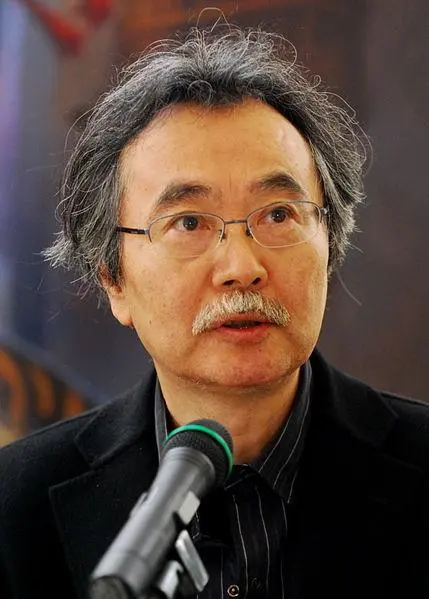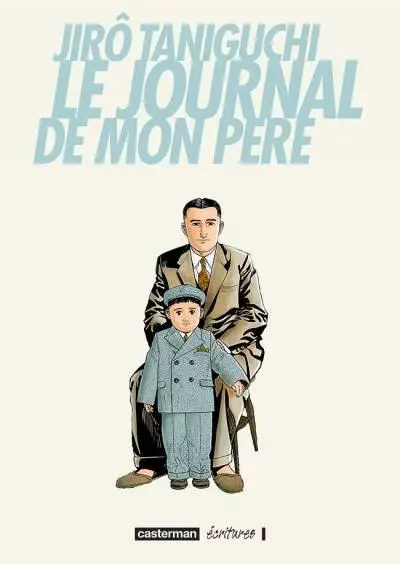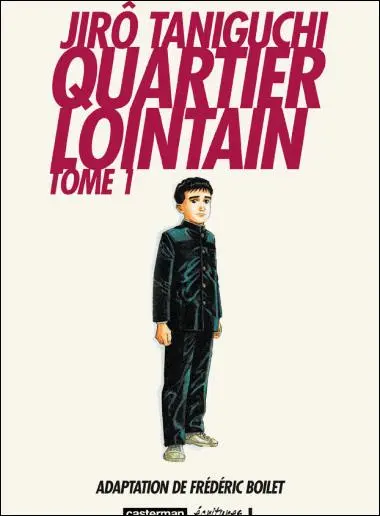Jiro Taniguchi 谷口 ジロー
Tottori's child
The intimate stories that the screenwriter, author and designer Jiro Taniguchi (1947-2017) made his specialty from the 1990s, are an exception in the world of manga. His subtle and sensitive work has earned him the nickname "manga poet".
Tottori's ambassador
In the documentary "In the footsteps of Jiro Taniguchi, the walking man" broadcast at the Angoulême International Comics Festival in 2015, directors Nicolas Finet and Nicolas Albert follow Jiro Taniguchi to Tottori and Kurayoshi. Walking the streets of his childhood, a camera in hand, the mangaka confides in front of the camera his attachment to his native region ; emphasizing the beauty and gentle way of life of the places. Taniguchi has indeed made his homeland the setting for his most emblematic manga : My Father's Journal , Distant Quarter or The Magic Mountain ; books punctuated by his childhood memories.
See also: Hiroshima in manga
Beginnings in Tokyo
Born in Tottori in 1947, the young man, from a modest background, arrived in Tokyo at the age of 22. His debut as an assistant to mangaka Kyuta Ishikawa then Kazuo Kamimura, Taniguchi will deliver them between 2005 and 2007 in A zoo in winter published in the magazine Big ComicOriginal. He published his first manga Kareta heya (A dry summer) the following year as an independent.
In the 1980s, in collaboration with Natsuo Sekikawa, he created Au temps de Botchan , a historical, social and political fresco of Japan at the end of the Russo-Japanese war featuring the famous writer Natsume Soseki.
To read: Natsume Soseki, the writer of modernity
Working constantly, Taniguchi dabbles in all styles: adventure, detective story, animal fresco, literary adaptation … But in this prolific work, the intimate stories highlighting everyday life hit the audience right in the heart. In 1992, his collection Terres de rêves received the prestigious Shogakukan manga prize, Special Jury Prize category. Taniguchi excels in the narration of human relations, in particular within the family circle and the link between man and nature; universal themes able to interest any type of reader.
A European influence
Since the publication of his first book in French, L'homme qui marche in 1995, Taniguchi has enjoyed impressive success in France . The rapprochements with European comics on the stylistic and narrative levels are not unrelated to this craze. Discovering European comics very early thanks in particular to the magazine Métal hurlant, Taniguchi is a mangaka whose style stands out strongly from that of his compatriots.
In interviews with Benoit Peeters, published in 2012 under the title Jiro Taniguchi: the man who draws: interviews, Taniguchi expresses his ambivalence : "The paradox is that while being mangaka, my style is quite close to comics the European and that I put a lot of elements in each image. I am probably somewhere between comics and manga from this point of view. And maybe that's why for some Japanese readers my manga are difficult to read .
Participating in the “La nouvelle manga” movement bringing together French and Japanese authors, he published Icare in 1997 in collaboration with Moebius, then Tokyo is my garden in 2001 with Frédéric Boilet and Benoit Peeters. After being named Knight of the Order of Arts and Letters in 2011 , he set the action of one of his stories in Paris in The Guardians of the Louvre (2014).
time suspended
The work of Jiro Taniguchi is completely original by the recurrence of his “ walking characters ” strolling in the streets of the city and giving free rein to their thoughts. Far from the frenzy of action manga , the protagonists of The Walking Man , The Walker and The Dreams of the Solitary Gourmet stroll, contemplate, remember; the promenade is conducive to the development of their reflection. Time then seems suspended. The narrative rhythm is similar to that of Yasujiro Ozu 's films; a reference to the famous filmmaker that Taniguchi himself readily recognized. Breaking with the classic codes of manga, his stories and his drawing are strikingly poetic. Emotion guaranteed!
To go further: Manga, an international cultural phenomenon



















